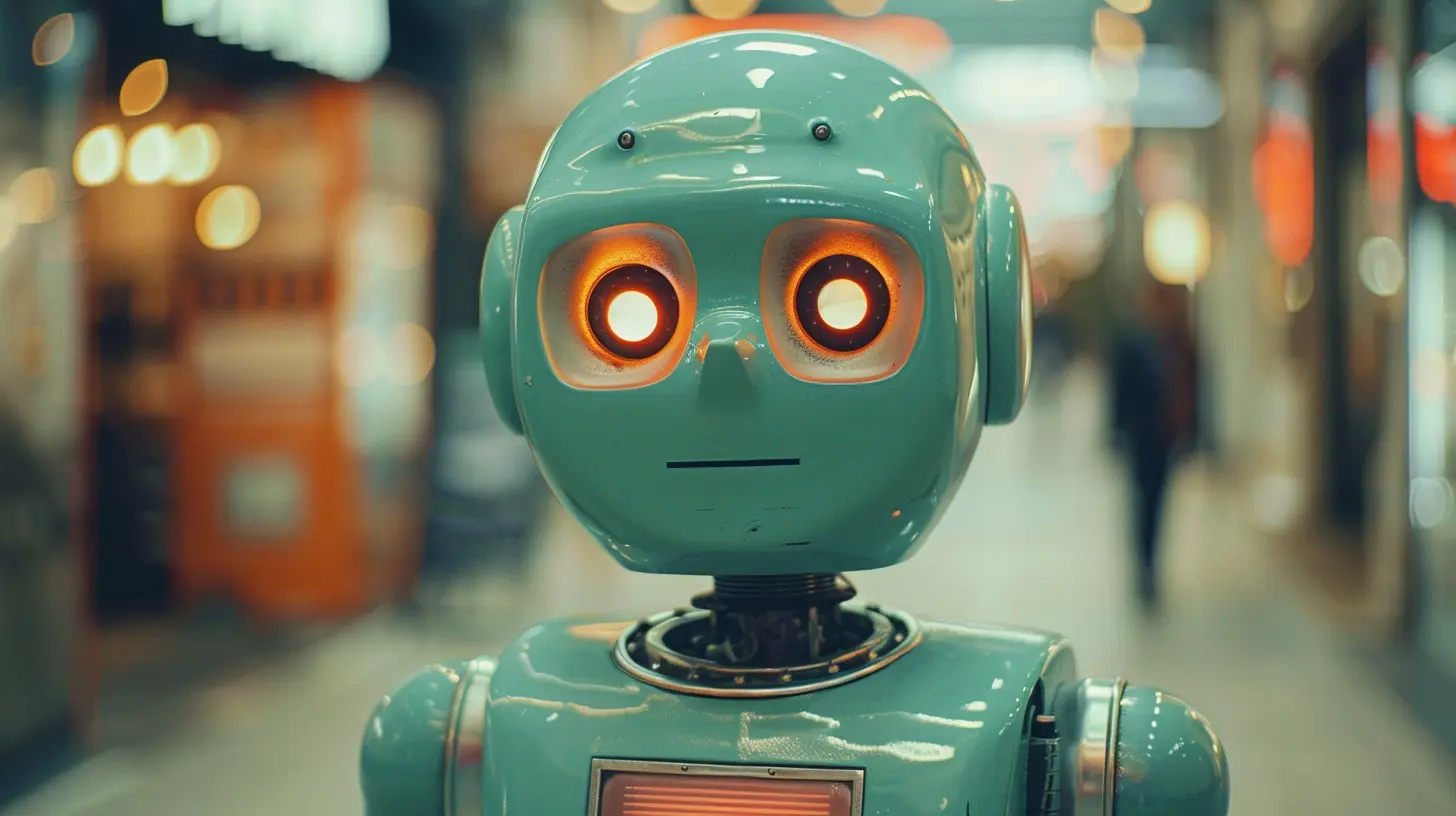How Automation Leads to Better Employee Satisfaction
11 November 2025
Let’s face it—when most people hear the word “automation,” the first thing that pops into their heads is job loss. Robots taking over. People being replaced. But that’s not the whole story. Not even close. In fact, when done right, automation can be a game-changer—and not just for businesses looking to streamline operations. It can actually make employees' lives easier and, yes, a lot more satisfying.
Let’s dig into how automation, instead of replacing employees, can become their favorite coworker. (Spoiler alert: it doesn’t drink your coffee or take your parking spot).
What Is Automation in the Workplace, Really?
Before we dive into the juicy benefits, let’s clear the air. Automation isn’t just about robots on a factory line or chatbots replacing customer service agents. It encompasses everything from auto-generated reports and workflow tools to software that takes over repetitive tasks like data entry, scheduling, invoicing, and more.Basically, automation handles all the mundane, repetitive tasks that no one wakes up excited to do.
Why Employee Satisfaction Matters More Than Ever
Employee satisfaction isn’t just some feel-good HR metric. It’s the secret sauce behind productivity, retention, creativity, and company culture. A happy employee is more engaged, more loyal, and let’s be honest, just more fun to work with.Now here’s the big question: how does automation play into this?
1. Reduces Repetitive Tasks (Goodbye, Boring Workdays!)
You know those tasks that feel like you're on a never-ending treadmill? Think manual data entry, copying/pasting info across spreadsheets, or managing endless email threads.Automation takes care of those snooze-worthy parts of the job, so people can focus on what they actually enjoy doing. When employees aren’t bogged down with mindless tasks, they have more time—and brainpower—for creative thinking, innovation, and meaningful work.
Imagine telling a marketing pro they don’t have to pull and organize weekly campaign stats by hand anymore. They can now focus on strategy, messaging, and customer engagement. Sounds like a win, right?
2. Boosts Efficiency Without Burnout
Ever heard someone say, “There’s just not enough time in the day”? Of course, you have. We’ve all been there. Endless meetings, tight deadlines, constant juggling—it’s exhausting.Automation helps employees get more done in less time, and without pulling their hair out. Tools like automated workflows, AI scheduling assistants, or automated email responses can handle the grunt work behind the scenes—all while your team breathes a little easier.
And less stress? That directly translates to higher job satisfaction. Because let’s be real, no one does their best work when they’re drowning in tasks.
3. Increases Flexibility and Work-Life Balance
Remote work has reshaped how we think about our 9-to-5. And guess what? Automation fits perfectly into this new world of flexibility.Automated systems allow processes to keep moving even when employees are offline. Things like approvals, file sharing, and notifications don’t have to wait until Monday morning anymore. That means employees can enjoy their evenings, weekends, or even vacation days without guilt—or constant Slack pings.
More autonomy + better work-life balance = happier employees. It’s that simple.
4. Fosters a Sense of Empowerment
Let’s be honest—when people feel micromanaged, they tune out. But when they have tools that help them get things done independently and efficiently? That’s empowering.Automation gives employees control over their workflows. They can set up reminders, automate their follow-ups, and streamline their day without waiting on someone else. There’s this incredible sense of ownership that develops, and with it comes pride in their work.
Instead of being stuck in reactive mode, they’re leading the charge. That shift alone can create a more motivated and confident workforce.
5. Encourages Skill Development and Growth
It might sound counterintuitive, but automation actually fosters upskilling. When the busywork is off the table, employees have time to focus on learning new tools, tackling more complex projects, or even taking on leadership roles.Companies can reassign workers who used to handle repetitive tasks into more strategic or creative positions. Not only does this create a stronger workforce, but it also boosts morale and engagement. People want to grow, and automation gives them the headspace to do it.
Think about it like this: Would you rather be stuck in a loop of endless data cleanup or be leading a data-driven project that actually makes an impact? Yeah, we thought so.
6. Supports Enhanced Collaboration
Automation isn't just about working faster—it's about working smarter. And one major perk is better team collaboration.Automation tools can keep everyone in the loop without constant check-ins. Project management platforms like Asana, Trello, or Monday.com automatically update task statuses, send reminders, and keep all communication in one place. No more chasing someone down for updates or digging through endless emails.
With everyone on the same page, it’s easier to share ideas, ask questions, and move projects forward. The result? A more cohesive team dynamic and a more satisfying work experience.
7. Supports Transparency and Accountability
When automation is used to track task progress or alert teams about bottlenecks, it takes the mystery out of workflow. Employees love transparency—it removes the guesswork and politics from performance tracking.No more “He said, she said” situations. With automated logs, dashboards, and reporting tools, everyone knows what’s been done, what’s pending, and who’s working on what.
This clarity doesn’t just help managers; it supports employees in staying on top of their responsibilities without feeling micromanaged. Accountability becomes simple and fair, which makes the workplace feel more trusting and respectful.
8. Improves Accuracy (And Reduces Headaches)
Mistakes happen. We’re all human. But when those mistakes are caused by manual processes—copy-pasting the wrong numbers, deleting a file by accident, skipping a step in a workflow—it can be frustrating.Automation reduces human errors by ensuring consistency. Whether it’s generating invoices, processing orders, or data syncing between platforms, automation follows the rules you set, every time, no exceptions.
Fewer errors mean less rework, fewer panicked emails, and way less stress. And isn’t that what we all want at the end of the day?
9. Makes Onboarding Smoother and More Enjoyable
Starting a new job can be overwhelming. New systems, new names, new processes—it’s a lot. But automation can simplify onboarding like a pro.Automated checklists, training sequences, and welcome emails can guide new hires through their first few weeks. They feel supported, prepared, and less like they’re being thrown into the deep end with no lifejacket.
And when onboarding goes well? New employees are 69% more likely to stay with a company for at least three years. So yeah, it matters.
10. Sparks Innovation
When employees aren’t stuck in the day-to-day grind, they get to think creatively. Problem-solving becomes the focus, not task juggling.And here’s the thing: creativity is one of the few things automation can’t do (at least not well). So, the more room employees have to innovate, the more valuable they become—and the more appreciated they feel.
Plus, when teams are encouraged to look for new ways to improve workflows, automation becomes a collaborative tool, not a top-down directive. That involvement makes people feel seen, heard, and respected.
But Wait—What About the Challenges?
Let’s pause for a second. Automation isn’t a magic wand. It comes with its own set of challenges—change resistance, adaptation time, and fears about job security.That’s why transparency is key. Leaders need to communicate that automation is meant to support employees, not eliminate them. Include employees in the implementation process. Let them test tools and give feedback. Make it a team effort, not just a tech upgrade.
When employees feel like they’re part of the journey, they’re far more likely to embrace it—and thrive because of it.
Final Thoughts
Automation doesn’t have to be the villain in the workplace story. When handled with care and intention, it can actually be the plot twist that changes everything for the better.By offloading routine tasks, promoting flexibility, boosting efficiency, and giving employees a sense of ownership and growth, automation becomes more than just a tool—it becomes a catalyst for happier, more fulfilled teams.
So, maybe it’s time we stop asking, “Is automation replacing us?” and start asking, “How can it help us do our best work?”
Because at the end of the day, satisfied employees aren’t just good for morale—they’re great for business.
all images in this post were generated using AI tools
Category:
Business AutomationAuthor:

Miley Velez
Discussion
rate this article
1 comments
Roman McGarvey
Automation isn’t just a trend; it's a revolution. Empower your workforce by liberating them from mundane tasks and watch satisfaction soar!
November 12, 2025 at 3:39 AM

Miley Velez
Absolutely! Automation transforms the workplace by removing repetitive tasks, allowing employees to focus on more fulfilling work, which greatly enhances job satisfaction.


